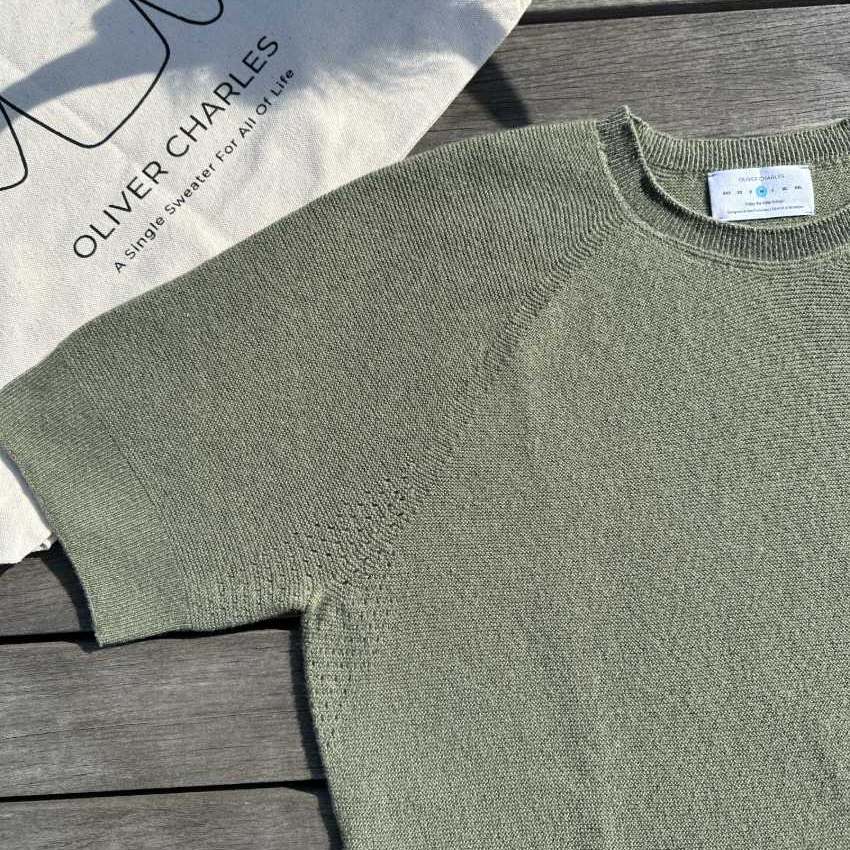Why Are Clothing Sizes So Inconsistent?
How to choose a sweater size perfect for you.
Key Sizing Takeaways
We’ve been learning a lot about size and fit over the last month. If you look through our crew neck sweater reviews, you’ll see that our fit ran small for a handful of our customers who left feedback. With this information in hand, we’ve been thinking about how we improve our sizing and reduce the amount of mismatched sizes in our next batch of deliveries.
In this blog, we explored the problem with fashion’s current sizing process, and we found that we’re to blame for this issue as well. To be an active participant in the evolution of sizing and to better inform you about our sizing, we recommend 3 things in advance of choosing your size:
- Can't go wrong sizing up, especially if you're expecting a more typical fit.
- If you prefer tighter, slimmer fits, stick with your regular size.
- Try out our sizing tool below! See that fit is tight, consider sizing up.
How Knitting Changed How We Think About Fit
Sometimes people are surprised to learn that we grew up knitting… it’s not that strange, but it sometimes surprises people. Maybe it’s fitting that we picked up weaving in the early days of Oliver Charles when we were first learning about yak wool fiber (AKA "khullu") as a cashmere alternative.
Fiber arts, like weaving and knitting, played a big role for us in starting Oliver Charles, and it goes back to when we were about eight years old. When we were kids, we’d spend most weekends going between each other's houses knitting needles in hand, committed to the simple picking, looping, and pulling motion. We were competitive about it too. Not only was it impressive to repeat this motion at 3x speed, but real clout was gained with what you could produce. Scarves were beginner level, hats would turn some eyes, and if you could crochet, you were the greatest.
Through knitting, we learned about “ease”. Those who knit, know ease as the difference between the body of the person wearing a garment and the garment itself. Otherwise known as how tight something like a sweater feels when you uniquely wear it.
When someone plans on hand-knitting a sweater for themselves, they’ll consider their measurements, how baggy or form-fitting they want the ease. They’ll also consider a few other things like the end sweater’s weight and style. All this advanced planning is so they create a comfy sweater they’ll actually want for daily wear.
While we didn’t hand-knit our sweaters, we did go through a similar process when designing them, and we drew on our experience knitting to help think through fit and sizing. Last week, we wrote about this process and why we believe the future of clothing should be more like ordering a burrito… personalized to our liking.
Problems With Sizing
While there are some outliers, today’s clothing scene is not quite at Chipotle level of personalization, and that’s fueled by a few problems, such as...
- The wild west of size labeling.
- Difficulty determining your ideal size.
- The burden of getting it all right.
Why are sizes so inconsistent?
Inconsistent sizing is a problem for many. Why's this? The history is rooted in body discrimination based on the social pressures to be of a particular shape AKA not curvy or plus sized. Reportedly, by The Chicago Tribune, Times, and Vox, there’s a trend taking place globally called, “vanity sizing”. This trend represents the inverse relationship between size and fit over time… essentially, a size 12 in 1940 is now a size 6. The theory behind vanity sizing is: we all want to feel slimmer, so why not just call a large a “medium”.
Besides vanity, sizing inconsistency is a consequence of decentralized decision-making. If every brand can choose what the ranges of sizes uniquely mean for their products, it’s inevitable that variation between two similar products for two different brands will exist.
So why not standardize sizing with a universal “chart”. This is a bad idea with good intentions. The intention is for greater trust and transparency into sizing and fit. The problem is that, as you may have guessed, universal standards risk a “one size fits none” outcome.
One size fits none is almost guaranteed because if it wasn’t enough that everyone’s body has a unique shape, fit is extremely subjective. For instance… How slim or baggy should a sweater fit? How long should sleeves and torso be? Should the cut be boxier or shaped like an hourglass? These are all questions we’re thinking about consciously or subconsciously when we shop for sweaters.
The toughest part about this dilemma is, most companies have adopted some level of universal sizing. In solidarity, almost all brands define products on a petite to plus size scale (XXS-XXL, 0-30). However, size alone is an impractical metric to determine fit.
For example, among other attributes that affect fit, our medium sweaters have a light-weight knit and a slim fit. If you were to compare ours with a medium from another brand that has a baggy fit or heavier knit, you’ll see that ours will fit differently than theirs.
It's similar to shopping for Levi jeans, where you'll not only consider length and waist measurements but also the cut and fit - 501s or 511s, what do you prefer?
Sizing Solutions
To solve for size inconsistency, consider the below questions when asking yourself, “what size clothes should I wear?”
- Find your ideal size by starting with your body measurements.
- Chest: measure around the fullest part of your chest.
- Waist: measure around your waist at belly button level.
- Arm-Length: measure from top of your shoulder to wrist.
- Determine the ease by considering how you like sweaters to fit.
- A baggy/loose fit can have as much as 6'' or more ease.
- A form-fit sweaters like ours have about 1'' of ease.
To make matters even more complicated, ease can be enhanced by elasticity due to materials and knit type. For instance, wool is more elastic than cotton and silk, meaning a small amount of ease with wool materials goes a long way.
The Burden of Getting It All “Right”
Simply hoping for the best when shopping for a good fit is unsustainable. Not only is it a bad experience for customers, but it’s also a bad experience for brands like ours.
Excluding large fast-fashion retailers (Zara), who are releasing new styles and fits seasonally, smaller brands are deeply incentivized to get fit “right”.
For instance, we adopted a more expensive method of production, called WHOLEGARMENT® 3D-knitting, which knits a more unique modern seamless sweater, while giving us less size discrepancy and risk of stretch.
Where does responsibility land?
Fit is subjective, and communicating how something fits is the responsibility of the brand. Although, there's some shared responsibility. When customers are equipped with information from a brand and have considered their fit, knit-weight, style, and materials preferences in advance, they’ll be far less likely to ask for a return or an exchange, which is great for everyone because each year 40% of the clothing purchased online alone is returned.
If you believe that every good wardrobe starts with owning less and owning better, consider buying yourself an OLIVER CHARLES sweater.
Shop NowSustainable Sweaters For Self-Care
How investing in a sustainable wardrobe benefits our mental health.
Read more7 Day Challenge: Yak Wool Is Perfect For Winter And Spring
Testing the Oliver Charles All Season Boat Neck in classic Wyoming winter activities.
Read moreSeasonal Minimalist Wardrobe Is Out
All you need is one Oliver Charles sweater for all seasons.
Read moreThis Yak Wool Sweater Elevated My Wedding Weekend Wardrobe
How I stayed comfortable and stylish in a sweater during my wedding festivities.
Read more



